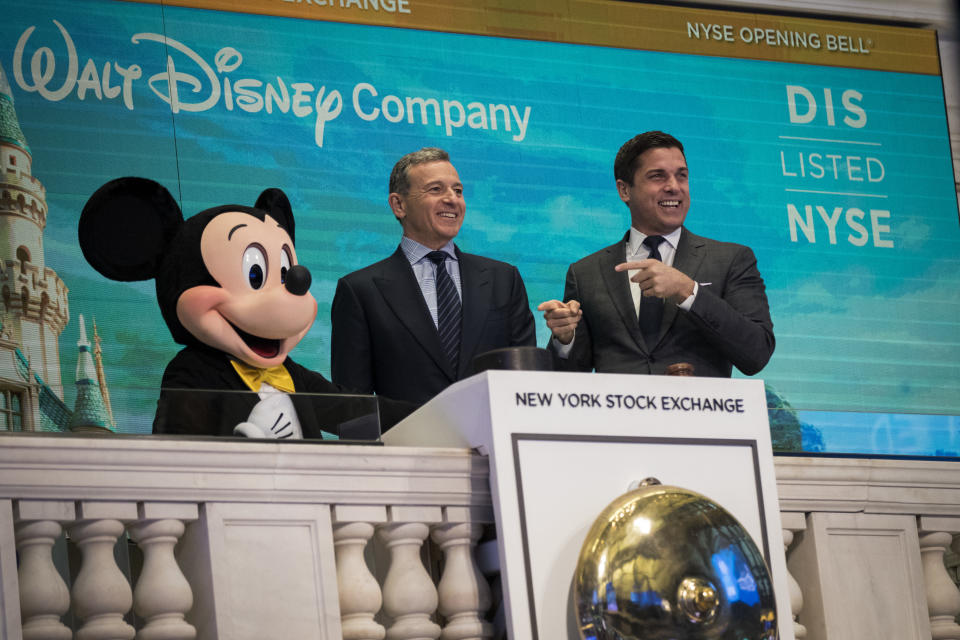Tesla, Disney, All Markets Summit — What you need to know in markets this week
New year, new markets.
After a 2017 that saw stocks drift higher while markets exploded to the upside in the early weeks of 2018, this past week’s trading showed that another placid does not appear to be in store for investors.
Punctuated by Friday’s sell-off, the major averages lost over 3% this past week to begin February on a downbeat note. The selling on Friday was relentless as markets broke lower at the open and continued to slide throughout the day. When the dust settled, the Dow lost 2.5%, or 665 points, while the S&P 500 lost 2.1%, or 59 points, and the Nasdaq lost just under 2%, or 144 points.
Meanwhile, Treasury yields continued their climb higher during the week with the 10-year hitting a four-year high of 2.85% after Friday’s jobs report. It was only back in the summer of 2016 that the 10-year hit a record low of 1.37%.

In the week ahead, earnings will continue to be the big market story with notable reporters including Tesla (TSLA), Disney (DIS), Nvidia (NVDA), General Motors (GM), Gilead (GILD), Chipotle (CMG), 21st Century Fox (FOXA), Viacom (VIAB), Yum Brands (YUM), Expedia (EXPE), and Philip Morris (PM) among dozens of other S&P 500 members. All told, 92 members of the S&P 500 are expected to report results this week.

The economic calendar will slow some after a week that saw both a Federal Reserve policy announcement and a jobs report, with the monthly reading on job openings the only economic reading of any note.
Meanwhile cryptocurrencies, once-biggest story in markets, were decimated this week with bitcoin (BTC-USD) at one point on Friday falling below the $8,000 mark while smaller coins including Litecoin (LTC-USD), Bitcoin Cash (BCH-USD), Cardano (ADA-USD), and Ripple (XRP-USD) each lost more than 30% this week.
And amid this latest decline in cryptocurrency prices, Yahoo Finance will host its latest All Markets Summit in New York on Wednesday, with this edition of the event focused solely on cryptocurrencies.
And of course on Sunday, Super Bowl LII will take place in Minneapolis, pitting the Philadelphia Eagles against the New England Patriots. Many investors will be familiar with the “Super Bowl Indicator,” which says it is better when a team from the NFC — in this year’s case, the Eagles — wins the game, with markets gaining, on average, 10.8% in years the NFC team wins against an average rise of 5.8% when the AFC wins.
Of course, last year the Patriots won and the market gained 20%, which just proves that the real Super Bowl Indicator says stocks tend to go up in years a Super Bowl is played.

Economic calendar
Monday: Markit services PMI, January (53.3 expected; 53.3 previously); ISM non-manufacturing PMI, January (56.5 expected; 55.9 previously)
Tuesday: Trade balance, December (-$52 billion expected; -$50.5 billion previously); Job openings and labor turnover survey, December (5.88 million jobs open previously)
Wednesday: Consumer credit, December ($19.3 billion expected; $27.95 billion previously)
Thursday: Initial jobless claims (232,000 expected; 230,000 previously)
Friday: Wholesale inventories, December (+0.2% expected; +0.2% previously)
Stocks go up and down
There is no reason to scoff at the market action this week.
Stocks had their worst week in two years, the Dow lost 665 points on Friday, and the kind of volatility that so many had warned would inevitably return to markets has, well, returned.
The increase in Treasury yields — from record lows back in the summer of 2016 — to four-year highs this week is the most obvious catalyst sending markets lower. The benchmark 10-year Treasury rate, so often used as the risk-free rate for investors that must be exceeded to find an attractive risk-adjusted investment, is now at 2.85%. We are now firmly in a rising-rate environment.
And on the heels of Friday’s jobs report that saw wage growth top expectations markets are now anticipating a more aggressive Federal Reserve, with markets now pricing in a 50% probability, or more, of a rate in each quarter of 2018.
Yet after this ugly week for investors, the stock market is still up nicely for the year — each of the major indexes are up better than 3%. But after more than a year of markets having not seen a 3% decline, the recent action feels perhaps more traumatic than it really is.
“A pullback doesn’t have to mean the bull market is over,” said analysts at Bespoke Investment Group in a note published Friday afternoon. And with the recent chorus of analysts looking for a decline, part of this week’s action is surely a self-fulfilling prophecy. If enough market participants call for and expect a market decline, there will in time be a market decline.
But if the fundamental reasons for the market going up over the last year was lower taxes, better corporate earnings, and good economic data, than nothing has really changed.
“On the earnings front, this season couldn’t look much better, even with analysts hiking estimates at their fastest pace in years as we entered this reporting period,” Bespoke writes. “Both the earnings and revenue beat rates this season are at their highest levels in at least a decade. And while beat rates are backwards looking, the guidance spread this season is at a record as well.”
The economic view from corporate America, in other words, is stellar. And so while it is notable any time the market rises or falls 3% in a week, these moves need not — and often do not — change the story of why the market’s current trend is what it is. Right now, the market trend is up. And this week’s action does not change that story.
—
Myles Udland is a writer at Yahoo Finance. Follow him on Twitter @MylesUdland
Read more from Myles here:
One candidate for Amazon’s next headquarters looks like a clear frontrunner
Tax cuts are going to keep being a boon for the shareholder class
Auto sales declined for the first time since the financial crisis in 2017
Foreign investors might be the key to forecasting a U.S. recession
It’s been 17 years since U.S. consumers felt this good about the economy

 Yahoo Finance
Yahoo Finance 
